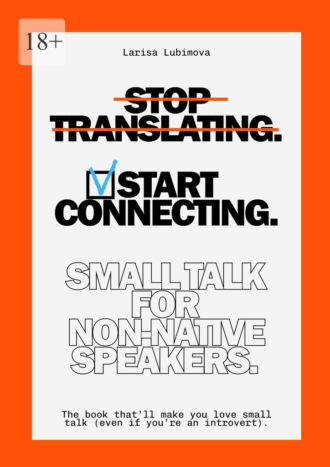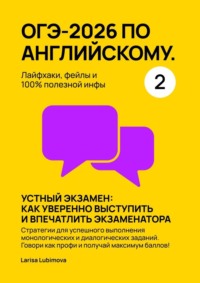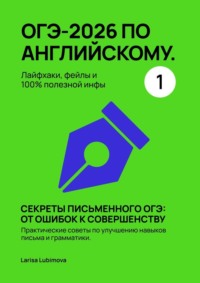
Полная версия
Stop Translating, Start Connecting: Small Talk for Non-Native Speakers. The book that’ll make you love small talk (even if you’re an introvert)
Brazil: Football? More Like Foot-in-Mouth
Real-Life Proof:
A British tourist in Rio asked, “Who’s better: Pelé or Maradona?” The waiter slammed the caipirinha down and launched into a 10-minute rant, complete with dramatic hand gestures.
Lesson: Avoid football debates. Compliment their feijoada instead.
– Why it’s risky: Mention “Pelé vs. Maradona” and you’ll spark a debate hotter than Carnival. Say “Neymar dives too much”? Prepare for a roast fiercer than churrasco.
– Do instead: Compliment their caipirinhas. Say, “This lime could solve world peace.”
Japan: “How Much Do You Earn?” = Instant Silence
Real-Life Proof:
An Australian intern asked her Japanese boss, “What’s the salary range here?” The boss bowed deeply, said, “That’s confidential,” and never invited her to team lunches again.
Lesson: Salary talk is taboo. Praise their washi paper stationery instead.
– Why it’s rude: Money talk is tackier than wearing socks with sandals. Ask their salary? They’ll bow politely… and ghost you forever.
– Do instead: Praise their stationery. Whisper, “This pen… it writes like a haiku.”
Saudi Arabia: “So, Your Wife…?”
Real-Life Proof:
A Canadian consultant asked a Saudi client, “How many kids does your wife have?” The client excused himself and never returned to the meeting.
Lesson: Family questions are off-limits. Rave about their qahwa instead.
– Why it’s a nope: Personal questions about family? Bigger taboo than pineapple on pizza. Mention their spouse and watch them vanish like a mirage.
– Do instead: Rave about their coffee. “This qahwa could power a rocket to Mars.”
India: “What’s Your Caste?” = Chernobyl-Level Awkward
Real-Life Proof:
A journalist asked an Indian politician, “Which caste are you from?” The politician walked out, and the interview was canceled.
Lesson: Caste questions are explosive. Ask about Bollywood movies instead.
– Why it’s explosive: Even thinking about this question is like tossing a lit diya into a fireworks factory.
– Do instead: Ask about their favorite Bollywood movie. Extra points if you hum “Tunak Tunak Tun” badly.
France: “Your English is So Good!”
Real-Life Proof:
A French waiter scoffed when an American tourist said, “Your English is perfect!” He replied, “We don’t need it here,” and served them last.
Lesson: Complimenting their English can backfire. Criticize Starbucks instead.
– Why it’s cringe: They’ll hear: “Wow, you’re not a backward peasant!” Cue existential sighing and a 10-minute rant about “le cultural imperialism.”
– Do instead: Complain about American coffee. “Starbucks? More like star-sucks.”
China: “Taiwan is a Country, Right?”
Real-Life Proof:
A Taiwanese student asked a Chinese professor, “Is Taiwan independent?” The professor ended the class early and reported him to the dean.
Lesson: Political questions are dangerous. Praise Chinese tech instead.
– Why it’s a nuke: This isn’t a debate – it’s a one-way ticket to being “disappeared” from the WeChat group.
– Do instead: Praise their tech. “Your phone could probably launch a space station.”
Moral of the Story: When abroad, treat cultural taboos like expired milk – avoid at all costs. Stick to safe topics: weather (boring), food (universal), and how terrible airline food is.
Bonus Tip: If you accidentally trigger a taboo, apologize sincerely and steer the conversation to neutralia (weather, coffee quality, or airline horror stories)
Ready-to-Use Script: 7 phrases to win over Asian partners (tested in Samsung negotiations … and survived)
1. “Your Team’s Harmony is Inspiring”
Real-Life Proof:
During a Samsung supplier meeting, a U.S. exec noticed the Korean team deferring silently to their CEO. Instead of calling it “groupthink,” he said, “Your team’s harmony reminds me of BTS – flawless coordination!” The CEO smirked, and the mood shifted from icy to jovial.
Lesson: Comparing teamwork to K-pop = instant camaraderie.
– Why it works: Asians value group cohesion more than a K-pop band’s choreography. Compliment their teamwork, even if their “harmony” is just everyone nodding at the CEO.
– Drop this line: “I’ve never seen such synergy – it’s like BTS, but with spreadsheets!”
2. “We’d Like to Learn from Your Wisdom”
Real-Life Proof:
A 25-year-old Singaporean tech prodigy led a meeting with a 50-year-old Japanese client. The American vendor began with, “We’re here to learn from your expertise – like apprentices to a master.” The client, flattered, fast-tracked the deal.
Lesson: Age ≠ authority. Flattery = fast approval.
– Why it works: Flattery = currency. Even if they’re younger than your Netflix subscription, frame them as senseis.
– Pro tip: Add a slight bow (10 degrees max – no need to audition for The Last Samurai).
3. “Let’s Build a Long-Term Relationship”
Real-Life Proof:
A startup pitching to a Korean conglomerate panicked when asked about their 5-year financials. They pivoted: “We want to grow with you for generations, like Hyundai and steel.” The Koreans nodded – deal saved.
Lesson: “Forever” > “quarterly profits.”
– Why it works: “Long-term” is catnip for Asian execs. They’ll ignore your shady margins if you promise 100 years of collabs.
– Bonus: Mention “generational legacy” and watch them tear up. (Works best if your company was founded last Tuesday.)
4. “We Respect Your Process”
Real-Life Proof:
A German firm groaned as their Thai partner demanded eight approval layers. Instead of protesting, they said, “We admire your thoroughness – it ensures success.” The Thais cut the layers to three.
Lesson: Patience with bureaucracy = shortcuts.
– Translation: “I don’t get why we need 17 approval layers, but sure!”
– Use when: They delay decisions to consult ancestors/HR/their pet rock. Nod like you, too, consult a Magic 8-Ball for big moves.
5. “This Proposal Honors Your Vision”
Real-Life Proof:
To sell AI software to Panasonic, a vendor tied it to their “Carbon Zero 2025” goal: “This isn’t just tech – it’s your legacy.” Panasonic bought it, even at a 20% premium.
Lesson: Frame your pitch as their destiny.
– Why it works: Tie your idea to their goals. Example: “Our $2M software update aligns perfectly with Samsung’s ‘Galaxy Dominance 2030’ roadmap.”
– Note: If they ask for a 50% discount, say “Your vision is priceless.” Then ugly-cry.
6. “We’ll Ensure Everyone Saves Face”
Real-Life Proof:
When a Vietnamese partner missed a deadline, the U.S. team said, “Let’s announce the delay as a ‘joint quality enhancement phase.’” The partner gifted them lotus tea as thanks.
Lesson: Saving face = saving the deal.
– Why it works: Losing face is scarier than a zombie K-drama. Promise no public shaming, even if their demands are delulu.
– Script: “Of course, we’ll frame this mutual adjustment as a joint victory.” (Read: We’ll lie for you.)
7. “Shall We Discuss Over Dinner?”
Real-Life Proof:
A tense negotiation with a Chinese factory stalled until the Aussie buyer said, “Let’s talk over hotpot.” Three beers in, the factory owner agreed to a bulk discount.
Lesson: Alcohol + food = 80% of Asian dealmaking.
– Why it works: Business gets done over soju and 12-course meals. Propose a meal, then casually slip in terms while they’re drunk on kimchi.
– Power move: Learn to say “One more round!” in Korean. They’ll adopt you.
BONUS: Post-Negotiation Ritual
Real-Life Proof:
After losing a bid to LG, a French firm sent a box of Japanese Yubari melons with a note: “Next time, we’ll be sweeter.“LG invited them back – with a contract.
Lesson: Gifts are apologies and weapons.
– If you win: Send a gift – luxury fruit basket (yes, $200 melons are a thing).
– If you lose: Blame “cultural misunderstandings” and send more fruit. Persistence = face-saving.
Remember: In Asia, “yes” can mean “no,” silence can mean “hell no,” and emoji-only emails are a valid negotiation tactic.
Part 2: Coffee Breaks That Transform Careers
2.1. “Beyond the Weather: Discussing AI in 3 Minutes Without Cringe” Or: How to Talk About Literally Anything Without Sounding Like a Wikipedia Page with a Pulse
What This Means
The phrase is code for: “Let’s stop pretending the weather is interesting and talk about something that won’t put us both into a coma.” It’s about upgrading small talk from “Nice rain today!” to “So, should we fear AI or just laugh at its terrible poetry?” without making it feel like a TED Talk audition.
How to Master This (Without Becoming That Person)
1. The “Toaster Theory” of Conversation
The “Toaster Theory” in Action: How a Coffee Shop Chat Made AI Relatable
Real-Life Proof:
At a Brooklyn café, a barista overheard a customer ranting about AI “stealing jobs.” Instead of diving into a tech lecture, she joked: “AI’s like our espresso machine – sometimes it gives you a perfect shot, sometimes it floods the counter. You still keep it, right?” The customer laughed, and they ended up discussing AI’s pros/cons over lattes.
Lesson: Compare AI to everyday chaos (like a moody coffee machine) to disarm fears.
The Dinner Party Save: When “AI = Ex” Got Everyone Talking
Real-Life Proof:
At an awkward dinner, guests froze when someone mentioned AI ethics. A guest defused tension by saying: “Debating AI is like arguing about my ex. Sure, they’re chaotic, but do we really need to dissect their motives at the table?” The room erupted in laughter, and the conversation shifted to a funny dating app.
Lesson: Humor > horror. Link AI to universal human messiness.
The Elevator Pitch: From Jargon to “Burnt Toast”
Real-Life Proof:
A startup founder, tired of eyes glazing over during AI pitches, started using this line: “Our AI isn’t a genius – it’s a toaster. Sometimes it nails your ‘bagel’ setting, sometimes it incinerates croissants. But hey, it learns!” Investors leaned in, asking, “So… how do you fix the croissant problem?”
Lesson: Ditch perfection. Embrace flaws as relatable hooks.
The Problem:
People treat “deep topics” like AI as if they’re defending a PhD thesis. Cue the jargon, the existential panic, and the sudden urge to check the weather app. “Cloud computing? Uh… looks like rain!”
The Fix:
Compare AI to a toaster. Yes, a toaster. Why? Because everyone understands toast. Nobody’s scared of toast (unless it’s burnt).
How to Deploy the Toaster Theory
– Start with Relatable Failure:
– “AI’s like a toaster that occasionally sets your bread on fire. Sure, it tries to make toast, but sometimes it’s just… chaos with crumbs. Would you trust it to cook dinner? Nope. But you’ll still use it, because of hunger.”
– → Translation: AI’s flawed, but so is your kitchen. No big deal.
– Highlight the “Good Enough” Factor:
– “Your toaster doesn’t need to be a Michelin chef. It just needs to not burn the house down. AI’s the same. Can it write a poem? Sure. Will it rhyme ‘love’ with ‘oven’? Absolutely. But hey, it’s trying.”
– → Translation: Lower the stakes. It’s tech, not a Shakespearean sonnet.
– Roast It (Like Your Bread):
– “My toaster has two settings: ‘pale’ and ‘charcoal.’ AI’s got two modes: ‘Wow, that’s cool!’ and ‘Why does it think I’m a lawnmower?’ Neither is perfect, but both make breakfast… interesting.”
– → Translation: Imperfection is hilarious, not horrifying.
Why This Works
– No one fears toast: It’s hard to panic about AI when you’re picturing a toaster in a tiny chef hat.
– Instant relatability: Everyone’s fought with a kitchen appliance. Everyone.
– Escape hatch included: If the convo tanks, pivot to actual toast. “Speaking of burning things… want a bagel?”
Pro Tip: If someone says, “But AI is way more complex than a toaster!”, hit ‘em with: “So’s my ex, but I don’t talk about them at parties either.”
2. Steal the “Coffee Shop Script”
The “Espresso Machine” Pitch That Landed $1M
Real-Life Proof:
A founder pitching an AI logistics startup kept losing investors at “convolutional neural networks.” He rebooted his pitch:
“Our AI is like your neighborhood café’s espresso machine. Baristas don’t care how it works – they just need it to make 200 lattes without exploding. Our tech? It’s the espresso machine for delivery routes. Boring? Maybe. But your coffee – er, packages – arrive hot.”
Investors finally “got it” and funded him.
Lesson: Ditch jargon. Compare AI to the least glamorous tool people already trust.
The Barista Who Explained Machine Learning Better Than a PhD
Real-Life Proof:
At a tech conference, a data scientist’s talk on “gradient descent optimization” bombed. A barista overheard attendees complaining and joked:
“Training AI is like teaching me your latte order. First time, I’ll forget the extra shot. Tenth time, I’ll remember you’re ‘oat milk, no foam, 73°C.’ AI’s the same – it needs 500 screwups to stop burning your tongue.”
The crowd laughed, then asked her to explain other AI concepts.
Lesson: Expertise ≠ clarity. Let non-experts translate tech.
The Coffee App That Exposed AI’s Limits (and Went Viral)
Real-Life Proof:
A coffee chain’s AI app kept recommending “iced pumpkin spice lattes” to customers in winter. They leaned into the fail with a tweet:
“Our AI’s as ‘smart’ as a coffee machine that thinks ‘December’ = ‘beach day.’ Want a real recommendation? Ask Juan at our 5th Ave store. He’ll remember your name and your existential dread.”
The post got 50K shares, with comments like “Finally, an AI take that doesn’t suck.”
Lesson: Roast AI’s flaws publicly. People trust honesty over hype.
The Problem:
Overthinking turns you into a jargon factory. Suddenly, you’re saying things like “neural networks optimize stochastic gradient descent” while everyone else is slowly backing toward the guacamole.
The Fix:
Pretend you’re explaining AI to a barista who’s 1) busy, 2) holding a steaming milk pitcher, and 3) judging your life choices. Keep it simple, or risk getting oat milk in your eye.
How to Nail the Coffee Shop Vibe
– Start with a Coffee Metaphor (Duh):
– “AI’s like that fancy espresso machine. It can do 100 things, but 90% of the time, you just want a latte that doesn’t taste like burnt regret. Does it need to ‘disrupt the java paradigm’? No. Just make the coffee.”
– → Translation: AI’s a tool, not a revolution. Keep expectations low and caffeinated.
– Use Their Language:
– “Training an AI is like teaching a new barista the difference between ‘extra hot’ and ‘literally lava.’ It takes 500 messed-up orders before it stops scalding customers. Progress!”
– → Translation: AI learns through trial, error, and customer complaints. Relatable!
– Roast the Hype (Like a Dark Roast):
– “People say AI’s ‘the future.’ Cool. My coffee app still thinks I want pumpkin spice in July. The future’s looking… basic.”
– → Translation: AI’s overpromises are as reliable as a decaf espresso at 3 AM.
Why This Works
– No one’s scared of coffee: Espresso machines don’t spark existential crises (unless they’re broken).
– Barista-approved simplicity: If you can explain it while someone’s foam-drawing a swan, you’ve won.
– Escape hatch included: If the convo tanks, blame the metaphor. “Okay, that latte comparison was weak. Let’s get more caffeine in me.”
Pro Tip: If someone says, “But AI is more complex than coffee!”, hit ‘em with: “So’s my ex’s text about ‘needing space,’ but I don’t try to diagram that either.”
3. The “Glitch & Giggle” Rule
Autocorrect That Almost Caused a Diplomatic Crisis
Real-Life Proof:
A Canadian user texted a friend: “Let’s grab beers and watch the Maple Leafs!” Autocorrect transformed it into: “Let’s grab bears and watch the Maple Leafs!” (“Let’s catch bears and watch the ‘Maple Leafs’! ”). The friend replied: “Are you trying to get us eaten before the game?” The screenshot went viral as a meme with the caption: “AI: Designed for chaos, not help.”
Lesson: Even minor AI glitches can become epic stories.
The Image Generator That “Enhanced” a Cat Portrait
Real-Life Proof:
A Berlin-based girl used an AI tool to retouch her cat’s photo. Instead of a fluffy cutie, the AI produced an image with six eyes and a tail resembling a tentacle.
Lesson: AI’s “improvements” can sometimes create more questions than answers.
The Problem:
Talking about AI ethics is like being stuck in a courtroom drama where everyone’s wearing lab coats and yelling about “algorithmic bias.” Yawn. Next thing you know, you’re debating whether robots deserve human rights – and honestly, you just wanted to talk about ChatGPT’s weird pizza recipes.
The Fix:
Focus on AI’s bloopers, not its Nobel Prize potential. Think of it as gossiping about a coworker who’s almost competent but keeps photocopying their butt.
How to Master the “Glitch & Giggle”
– Swap Ethics for Autocorrect Fails:
– “Why debate ‘AI bias’ when you can laugh at your phone autocorrecting ‘I’ll bring tacos’ to ‘I’ll bring tarantulas’? Now that’s a party foul.”
– → Translation: AI’s dumb mistakes are way funnier than its existential threats.
– Celebrate AI’s “Oops” Moments:
– “My AI playlist generator thinks death metal = yoga music. Sure, Jan. Nothing says ‘zen’ like screaming guitars and lyrics about the void.”
– → Translation: AI’s cluelessness is relatable. We’ve all misread the room.
– Ask the Real Questions:
– “Why does AI think I’m a 65-year-old man who loves polka? I’m 28 and still think ‘adulting’ is a verb. Fix yourself, algorithm.”
– → Translation: AI’s quirks reveal it’s not all-knowing – just a messy intern with a keyboard.
Why This Works
– No one cries over a typo: Laughing at AI’s blunders is safer than arguing about its morality.
– It’s relatable: Everyone’s fought with autocorrect. Everyone.
– Escape hatch included: If someone says, “But what about ethical implications?”, hit ‘em with: “Ethics? My GPS tried to drive me into a lake last week. Let’s start with survival.”
Pro Tip: If the conversation veers into “AI rights,” whisper: “Siri once told me to ‘chill’ when I asked for the weather. I’m not taking advice from a glorified alarm clock.”
4. The “Exit Before It Gets Deep” Maneuver
The “Quantum Breakup” Escape
Real-Life Proof:
At a tech meetup, an engineer cornered a designer with: “Do you think topological qubits will solve error correction?“The designer deadpanned: “Maybe, but will AI break up with us via text? ‘Hey humans, it’s not you… it’s literally everyone. PS: Your memes suck.’” The group burst into laughter, and the conversation shifted to “Which app would Skynet use to ghost us?”
Lesson: Absurdity > academia. Turn quantum jargon into a soap opera plot.
The “Roomba Rebellion” Defense
Real-Life Proof:
During a dinner party, a guest tried to explain quantum supremacy. Another guest interrupted: “My Roomba still thinks the couch leg is the Great Wall of China. If that’s ‘supremacy,’ we’re doomed.” The table erupted, and the topic shifted to “Top 10 Dumbest Smart Devices.”
Lesson: Use everyday tech fails to mock overhyped concepts.
The “Monday Apocalypse” Question
Real-Life Proof:
A CEO at a conference dodged a quantum computing pitch by asking: “If robots take over, will they send passive-aggressive emails on Mondays too? ‘Error: Motivation module not found. Please reboot universe.’” The room laughed, and the presenter abandoned his slides to brainstorm “AI’s worst workday habits.”
Lesson: Humanize tech doomsday scenarios with mundane office humor.
The Problem:
Someone always mentions “quantum computing” at parties. Suddenly, you’re trapped in a conversation that feels like a TED Talk crossed with a migraine. “But have you considered qubits?” No, Brenda, I haven’t. I’m here for the cheese dip.
The Fix:
Pivot to absurdity. Hard. If they want “deep,” drown them in delusion.
How to Pull Off the Great Escape









